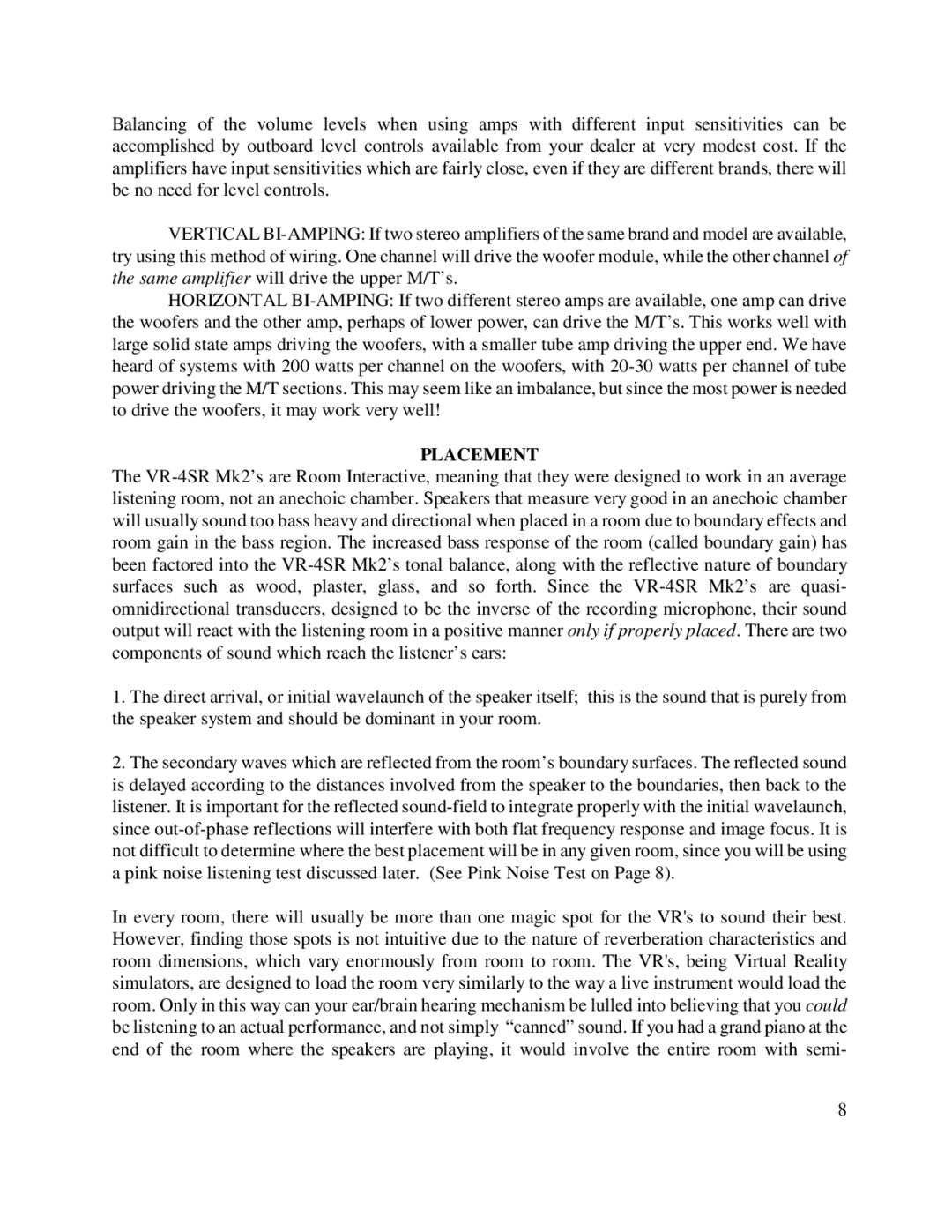VR-4SR MK2 specifications
Von Schweikert Audio is known for pushing the envelope in high-fidelity audio design, and the VR-4SR MK2 stands as a testament to this ambition. This floor-standing speaker model blends cutting-edge technology with exceptional craftsmanship, making it a standout choice for audiophiles seeking rich, immersive sound.The VR-4SR MK2 is engineered with a multi-driver configuration, featuring a dedicated ribbon tweeter and dual 7-inch woofers. This combination is designed to provide an expansive soundstage while maintaining precise imaging. The ribbon tweeter is a hallmark of Von Schweikert's design philosophy, allowing for extended high-frequency response and a level of detail that many speakers struggle to achieve. It delivers clear and airy treble, ensuring that high notes resonate without harshness, making it perfect for both classical and contemporary music.
One of the key technologies utilized in the VR-4SR MK2 is the company's proprietary RCM (Resonant Chassis Management) system. This technology minimizes the resonance that can color sound reproduction, resulting in a cleaner and more accurate audio signal. The cabinet is also engineered to reduce standing waves, contributing to a tighter bass response and enhancing overall clarity.
In terms of build quality, the VR-4SR MK2 features a beautifully crafted enclosure that is visually appealing and functionally effective. With a sleek design available in various finishes, it can complement modern and traditional décors alike. Its robust construction not only enhances the aesthetic but also ensures durability over time.
The speaker’s sensitivity rating of 89 dB makes it relatively easy to drive, meaning it can be paired with a wide range of amplifiers without compromising performance. Whether you're using a high-powered amplifier or a more modestly powered unit, the VR-4SR MK2 maintains consistent performance across different playback levels.
Moreover, flexibility is a crucial aspect of the VR-4SR MK2. Its rear-firing ports allow for tailoring the bass response to fit different room acoustics, making it adaptable in various setups. This helps users achieve optimal sound reproduction regardless of their listening environment.
In conclusion, the Von Schweikert Audio VR-4SR MK2 encapsulates the perfect blend of innovative technology and meticulous craftsmanship. With its dynamic range, impressive imaging, and aesthetic appeal, it remains a worthy contender in the realm of high-end audio speakers, promising a captivating listening experience for music enthusiasts.
